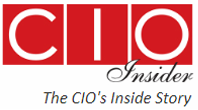
Sameer Zaveri
Co-Founder
It all started with the intent to solve one of the most pressing challenges in cloud operations, costly and effort-intensive workload mobility.
Building on that vision, DATAMOTIVE, a Pune-based enterprise workload portability company — has emerged as a reliable ally in eye-shut time for enterprises seeking seamless disaster recovery (including backup and ransomware recovery) solutions and workload portability across cloud environments.
By changing the DR paradigm from backup-only to ensuring business continuity irrespective of the type of event, DATAMOTIVE aims at preparing organizations to reduce downtimes, ensure end user satisfaction, and protect their own brands.
The company combines deep technical expertise with a people-first culture of innovation and accountability to restore your most valuable data in just 10 minutes.
DATAMOTIVE relentlessly delivers on this promise, which has enabled organizations to achieve business continuity that is predictable, efficient and cost-effective.
In fact, DATAMOTIVE stands out as pretty much the only disaster recovery solution capable of delivering a consistent 10-minute recovery SLA across any cloud, regardless of workload type or size. This leads to up to 60–70 percent savings in the total cost of ownership for DR operations.
We are positioning ourselves at the forefront of next-generation hybrid cloud disaster recovery by integrating AI-driven intelligence to make recovery operations more proactive and expanding into key global markets such as the US, EU, and APAC.
We are delighted to have an exclusive conversation with Sameer Zaveri, who co-founded the company with Yogesh Anyapanawar in 2021.
In conversation with Sameer Zaveri, Co-Founder, DATAMOTIVE
What are the key solutions you provide, and how has the feedback been so far?
From a disaster recovery perspective, we currently offer two core solutions: seamless workload recovery across clouds and point-in-time, check point-based recovery. Soon, we will add backup and ransomware recovery, creating a comprehensive business continuity suite.
Our value proposition rests on three pillars. First, true cross-cloud and hybrid-cloud capabilities with a 10-minute RTO, ensuring predictable recovery times across workloads.
We are positioning ourselves at the forefront of next generation cloud disaster recovery by integrating innovation & intelligence, ensuring seamless continuity of operations
Second, our incremental failback feature, provides organizations an ability to return to primary environments 50-60 percent faster and similar cost savings. Finally, our workload-based licensing model rather than traditional agent-based, or data change-rate based models, ensures a clear line of sight into organization’s DR cost of ownership.
Combining the three pillars; predictable recovery times, 50-60 percent faster, cost-effective failback, a workload-based licensing model, Datamotive DR solution can reduce the total cost of ownership by 60–70 percent compared to market alternatives.
Could you share a recent example?
I will give you an example of a leading private bank in India. The client was relying on a traditional disaster recovery solution between two data centers, but they faced significant challenges.
Conducting disaster recovery drills required nearly eight hours, while failback operations took an entire day. For an asset management company, such extended time lines resulted not only in substantial financial losses, running into crores, but also posed serious risks to brand reputation.
By deploying our solution, we were able to reduce their DR drill time from eight hours to just 45 minutes, and their failback time from one full day to only eight hours. This translated into nearly 16x improvement in the efficiency of their disaster recovery operations.
The outcome was enhanced business conti -nuity, minimized financial impact, and significantly greater operational resilience.
How would you describe your team and the potential they bring in driving innovation and building solutions?
As a four-year-old startup, we have been deliberate in building a strong organizational foundation. We have invested in all critical functions, engineering, sales, marketing, HR, finance, and operations, along with the right tools to enable our teams to succeed.
From a cultural perspective, we place strong emphasis on employee engagement. Activities are organized regularly, such as every alternate Friday or at least once a month, to bring teams together beyond their functional roles, fostering collaboration and mutual under standing.
Given that our product differs from traditional solutions, our teams, engineering, sales, and marketing alike, are encouraged to build on existing knowledge while thinking creatively to address unique challenges. We operate on a philosophy of accountability and responsibility rather than micro management, which empowers our employees and motivates them to perform at their best.
Our hiring philosophy focuses on attitude over specific skill sets. While technical skills can be taught, the right mindset and adaptability are essential. This approach ensures that our people grow along with the organization, while continuously driving innovation and business impact.
What market opportunities do you aim to tap into, and how does your current roadmap support this vision?
From a roadmap perspective, we are focused on three key priorities. First, we are expanding our product portfolio by adding two new offerings, backup and ransomware recovery, further strengthening our business continuity suite.
Second, on the market front, we plan to expand aggressively into the United States, followed by Europe and the Asia-Pacific region, which we see as significant growth opportunities.
Finally, we are committed to embedding artificial intelligence into our solutions. By leveraging generative and agentic AI models, our goal is to make disaster recovery operations more proactive rather than reactive, while also addressing repetitive operational challenges with greater efficiency.
So, our future roadmap centers on product expansion, global market entry, and AI-driven innovation to enhance operational resilience and efficiency in the disaster recovery space.



.png)

